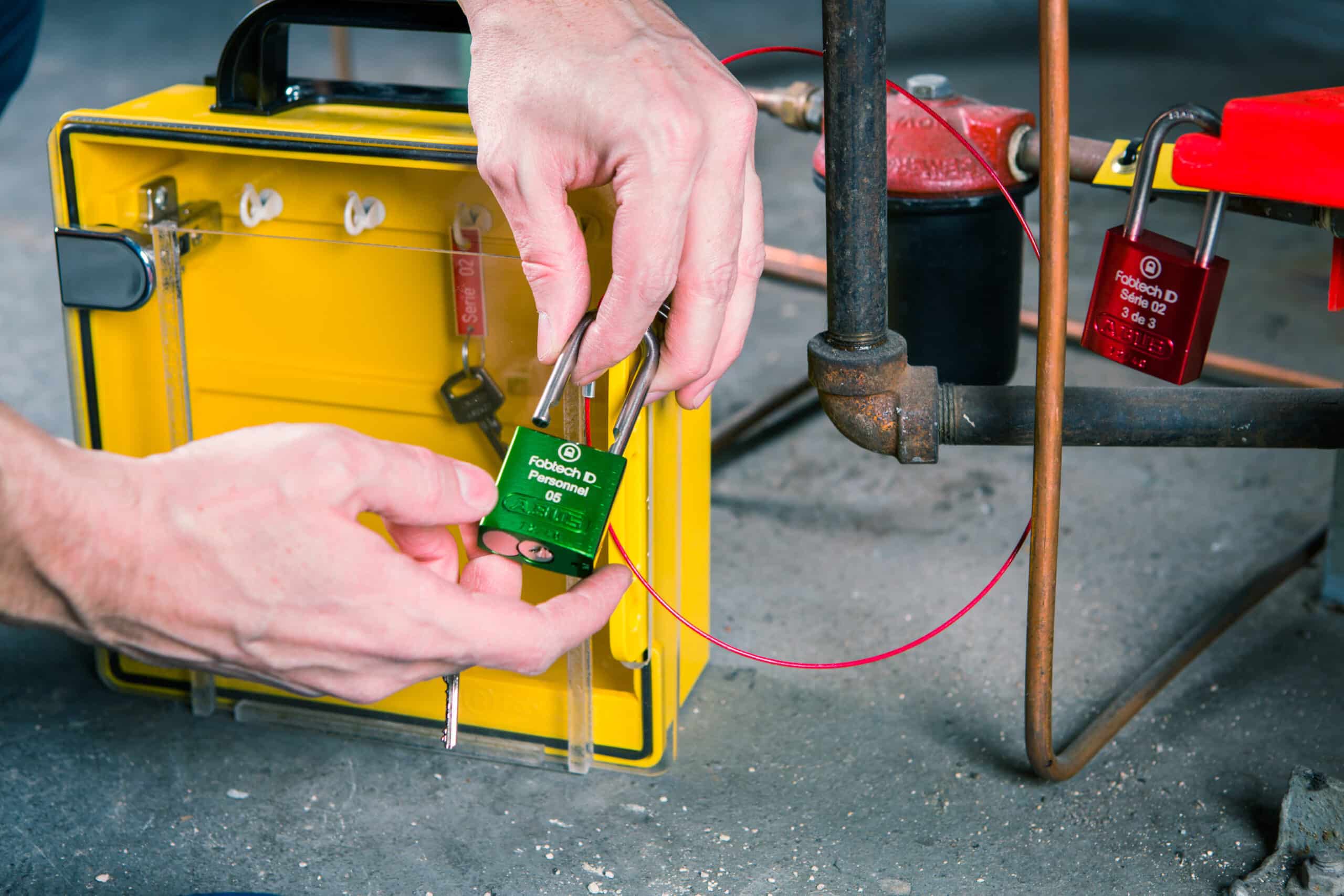LOTO | Different Types of Locks for Different Purposes

Using Behavior-Based Safety to Stop Complacency
5 August 2021
You don’t plan to have an accident, right? So why is it that with all the safety measures put into place in companies, someone can still have an accident? With all the training, procedures and safety measures we have, why are there still accidents happening in the workplace?
Quite often, it is because of complacency.
When a company manages its safety really well, a strange phenomenon can start happening where the workers no longer see the risks. They will stop looking for those risks that, in their opinion are well managed. They won’t be afraid of them anymore, and will forget about them.
A well-managed organization can reduce its accidents similar to the graph below. The number of events decreases to a low point and then a plateau. This is where people start forgetting about safety because they assume they can. It’s exactly where you can expect a spike of accidents to happen.
Often, companies like to put up safety signs as reminders. But too many signs turn into noise and are no longer seen. Or they put up signs with lagging indicators telling you how many days since there’s been an accident. Those can be detrimental because no one wants to be the one to ‘reset the clock’, so they won’t report accidents. You risk cutting communication with your workers that way and stop good information from coming in.
If you really want to put up signs, you should focus on positive messages such as “We retrained 12 people on March 12th. Next training on June 10th”. Why not?
A better way to handle this situation is with BBS, behavior-based safety. There are many definitions for it, but in essence, it is a process that informs management and employees of the overall safety of the workplace through safety observations. BBS is intended to focus workers’ attention on their own and their peers’ daily safety behavior. These observers regard safe behaviors and risky situations. This isn’t simply being a safety cop handing out tickets. The use of these techniques should in no way replace the three duties of the organization which are Foresight, Authority and Efficiency.
In order to get full participation from your workers, you have to adopt a no name, no blame policy. In other words, any comments or observations provided do not have anyone’s name associated with them. Even if a company is not looking to blame anyone, to ensure openness, the workers need this policy to feel comfortable enough to contribute.
This isn’t regarding accidents or investigations. It is regarding making observations of the work area or fellow workers.
If a worker is lost in thought and not paying attention to his work, he could be putting himself or others in danger. He would want his fellow employees to keep a watchful eye out for this kind of behavior and pointing it out to him when it occurs.
Behavior-based safety works when everyone is being responsible for their own and their fellow workers’ safety, not leaving it up to the safety department only. Positive reinforcement or validation of good safety practices can keep the complacency from setting in. It can keep the event spikes from happening.
There’s a lot of people in safety that don’t like a behavior-based system. They think it is a way to blame the workers and have them snitch on each other. They think they have to police everyone. BBS does look at risky behavior, especially if workers are no longer seeing it, but it also looks at good safety practices that can be validated. It’s all in an effort to stop complacency. Think of it as a compliance audit of existing programs and procedures with an extra dose of empathy and communication. Make any more sense?
What if you spotted someone that was not only wearing the proper PPE but extra protection as well? You could compliment her and find out why she’s doing it. She might have a good reason that causes you to change policies. Insights and feedback are encouraged and will come from the workers when they feel comfortable in expressing their ideas. Showing them that you are listening to their observations and suggestions is part of how behavior-based safety works.
When workers are able to tell you about ‘training that isn’t sufficient’, or a ‘lack of proper tools’, without fear of being reprimanded, the safety level of the company can improve.
It can take some time to move your company towards a behavior-based safety system as people may be used to a blame culture. But if you stay consistent with your approach, acknowledging and validating input from your workers, eventually they will come to realize you’re not looking to blame someone but to improve your safety standards.
When everyone takes responsibility for themselves and their colleagues, your company has a fair shot at staying safe, not allowing complacency to set it in.
By Maxime Ouellet,
Chief Growth Office
CONFORMiT
P: 1 888-545-9265 X 406